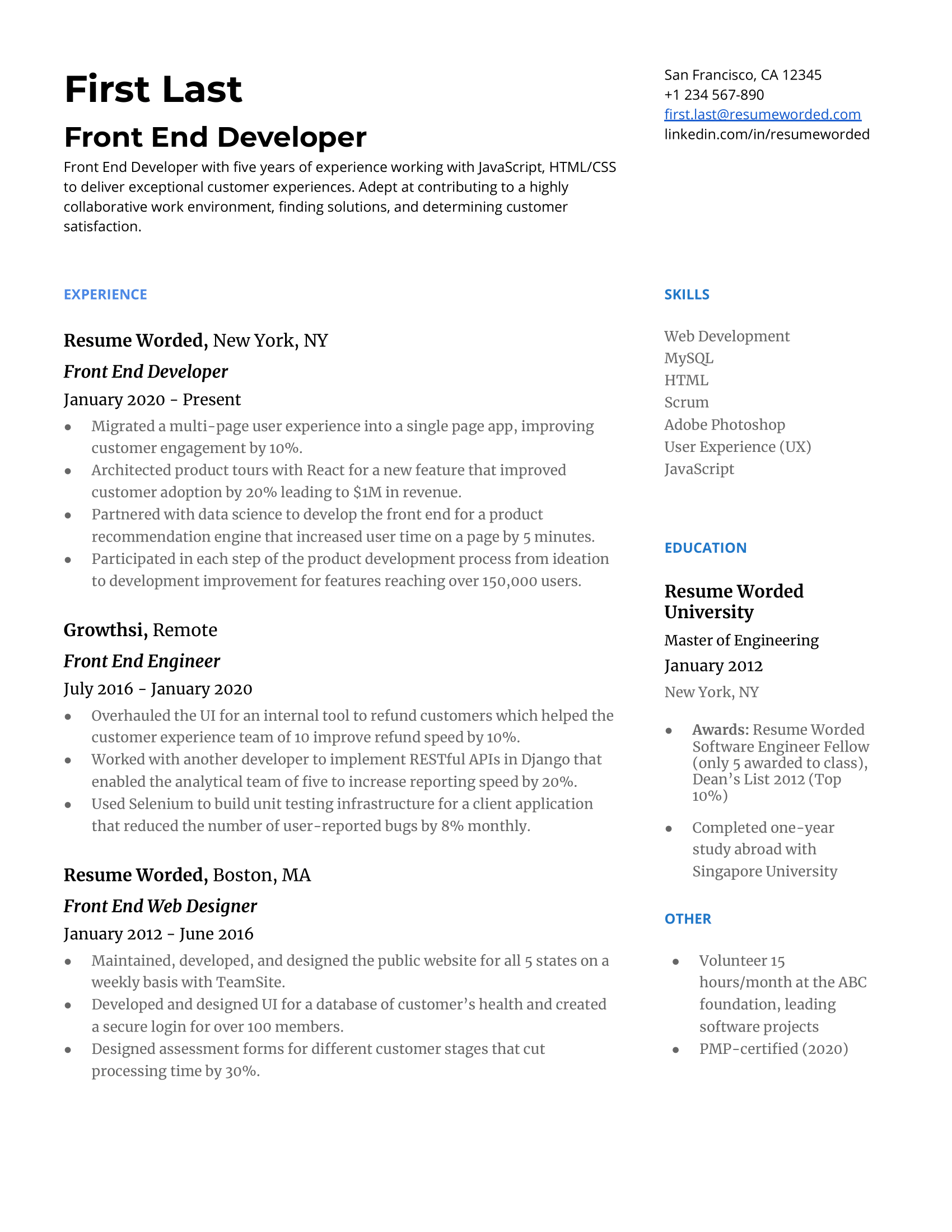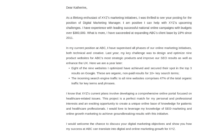Landing your dream front end developer job often hinges on making a strong first impression. In a competitive market, your CV isn’t just a document; it’s your personal marketing tool, showcasing your skills, experience, and potential. It needs to grab attention instantly and communicate your value clearly to hiring managers who often skim through applications in seconds.
Many developers, even highly skilled ones, struggle with translating their technical prowess onto paper effectively. That’s where having a well-structured and compelling front end developer CV template becomes invaluable. It provides a roadmap, ensuring you include all the crucial information while presenting it in a professional, easy-to-read format that highlights your front-end expertise.
What Makes a Standout Front End Developer CV?
Crafting a CV that truly stands out requires more than just listing your past jobs. For front-end development, it means showcasing your ability to build engaging user interfaces, your proficiency in modern web technologies, and your problem-solving skills. A great CV acts as a narrative, guiding the recruiter through your journey and demonstrating why you are the ideal candidate for their team.
Think about what a hiring manager for a front-end role truly looks for. They want to see tangible evidence of your coding ability, your understanding of UX principles, and your collaborative spirit. This isn’t just about buzzwords; it’s about real projects, real impact, and real growth.
The structure of your CV plays a crucial role in its effectiveness. While there’s no single perfect layout, certain sections are non-negotiable and, when optimized, can significantly boost your application’s chances.

Let’s delve into the essential components that every powerful front end developer CV template should feature, ensuring you cover all your bases and present your best self.
Essential Sections to Include
- Contact Information: Keep it simple: Name, phone, email, LinkedIn URL, and crucially, a link to your online portfolio or GitHub profile. Recruiters will check your code.
- Professional Summary/Objective: A concise 2-3 sentence pitch highlighting your key skills, experience, and career aspirations relevant to front-end development. Tailor this to each job.
- Skills: Categorize your technical skills: Languages (HTML, CSS, JavaScript), Frameworks (React, Angular, Vue), Libraries (jQuery, Redux), Tools (Webpack, Babel, Git), and Soft Skills (communication, problem-solving).
- Work Experience: For each role, list company, title, dates. Crucially, use action verbs and quantify your achievements. “Improved page load time by 30%,” “Developed responsive UI for 5+ major features.”
- Projects: This is vital for front-end. Showcase personal or open-source projects. For each, describe the challenge, your role, the technologies used, and provide live demos or GitHub links. This is where your front end developer CV template really comes alive.
- Education: Your degrees, certifications, and relevant coursework. Mention bootcamps or online courses if they are significant.
- Awards and Recognition (Optional): Any accolades, hackathon wins, or significant contributions can add a nice touch.
Tailoring Your Front End Developer CV for Success
Having a solid front end developer CV template is a fantastic starting point, but true success lies in how you adapt and refine it for each application. Generic CVs often get lost in the shuffle. To truly stand out, your CV needs to feel personalized and directly address the specific needs of the role you’re applying for.
One of the most critical aspects is keyword optimization. Many companies use Applicant Tracking Systems (ATS) to filter resumes before a human even sees them. These systems scan for keywords found in the job description. Integrate relevant terms naturally throughout your CV, from your summary to your experience descriptions, ensuring your application makes it past this initial hurdle.
Beyond keywords, focus on showcasing your impact. Instead of simply listing responsibilities, emphasize the outcomes of your work. Did your code improve user engagement? Did you streamline a development process? Quantifiable achievements like “reduced bug reports by 15%” or “contributed to a feature used by 100,000 active users” speak volumes about your value.
Finally, consider the visual appeal and readability. As a front-end developer, your CV itself is a testament to your understanding of user experience. Ensure it’s clean, well-organized, and easy on the eyes. Use consistent formatting, legible fonts, and plenty of white space. A well-designed CV implicitly communicates your attention to detail and design sensibilities.
- Customize for Each Role: Read the job description carefully and rephrase sections of your CV to align with the required skills and responsibilities.
- Quantify Achievements: Always aim to include numbers, percentages, or concrete results that demonstrate the impact of your work.
- Proofread Meticulously: Typos and grammatical errors can undermine your credibility. Get a fresh pair of eyes to review your CV before sending it out.
- Showcase Your Best Work: Prioritize projects and experiences that best represent your skills and are most relevant to the role.
- Keep it Concise: While detail is good, avoid excessive jargon or overly long paragraphs. Recruiters appreciate brevity and clarity.
In the dynamic world of front-end development, your CV is more than just a summary of your past; it’s a powerful forecast of your future contributions. By investing time in crafting a well-structured, impact-driven document that truly reflects your capabilities, you significantly increase your chances of landing that crucial interview. Remember, every line you write is an opportunity to impress.
Your unique blend of technical skills and creative problem-solving deserves to be highlighted effectively. With these guidelines, you’re well-equipped to create a CV that not only opens doors but truly showcases your potential as an invaluable asset to any development team. Good luck on your job search!
